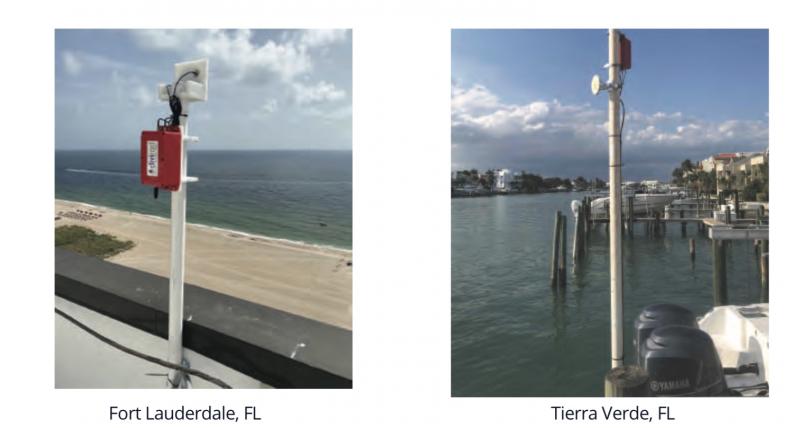Tide sensor stations to be installed on west side of Penobscot Bay to record sea storm, level trends
Thu, 09/23/2021 - 8:15pm
According to US Harbors, a company based in Rockland, there are 200 observational tide stations across the country, all maintained by the National Oceanic and Atmospheric Administration (NOAA), and all keeping an eye on the sea, and sea-level rise.
But, while the tide stations are highly sophisticated, they are also expensive to implement. (See attached PDF for details about the sensors)
NOAA’s budget can’t support providing stations in every location, so tide predictions for most towns are algorithmically derived (e.g., not based on actual observations). This gap in coverage makes it impossible for local communities to fully understand—and plan effectively for—changes in storm surge trends and sea-level rise.
US Harborsbbhas been looking for affordable solutions to this issue, and is participating in a six-month pilot program in Maine that includes installing the tide stations around Penobscot Bay in Belfast, Camden, Rockport, Rockland, and Tenants Harbor/Saint George.
US Harborsbbhas been looking for affordable solutions to this issue, and is participating in a six-month pilot program in Maine that includes installing the tide stations around Penobscot Bay in Belfast, Camden, Rockport, Rockland, and Tenants Harbor/Saint George.
During the trial each site will have access to hyper-local tidal data as well as a flood alert service. The objective of the pilot is to determine solutions for long-term monitoring of sea-levels that are accessible to small municipalities.
The pilot will be in effect from October through March, during which time stakeholders are to review and give feedback on various aspects of the technology and data service.
The pilot will be in effect from October through March, during which time stakeholders are to review and give feedback on various aspects of the technology and data service.
US Harbors and Divirod will also aggregate the tidal data across the five pilot communities to evaluate trends and will review findings with the key players in the Maine state government and NOAA.
The technology and data services are being provided for free by Divirod for the duration of the pilot project.
US Harbors is also planning additional pilot projects in other parts of the country to test other tide monitoring technologies.
KEY DATES:
US Harbors is also planning additional pilot projects in other parts of the country to test other tide monitoring technologies.
KEY DATES:
Tuesday, Sept. 28 – Units will be installed in the 5 test sites.
Week of Oct. 25 – First group Zoom check-in to review data and experience to date.
Event Date
Address
United States
Standard Post



























